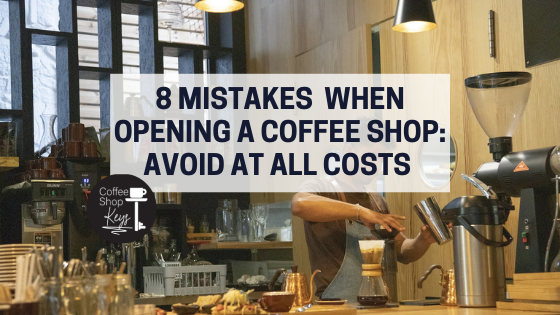Solid Coffee Shop Funding Strategies
- Tom Snyder

- Mar 19, 2024
- 3 min read
Before I jump in, check out the Coffee Shop ROI Calculator to help plan your funding strategy.
Plan for more runway than you need
Not starting with enough money is a huge mistake.
Many new businesses fail because they didn't have enough financial runway before they started picking up traction.
My rule of thumb is to have enough money for a full year of operation before you open.
This mistake can be costly and time-consuming because coffee shop owners may not find out until it is too late that they don't have the revenue needed to stay afloat, or worse yet, even cover their expenses.
Yes, this means you need to either save more before opening or get more startup funding, but it is necessary.
Besides keeping up with operating costs, if you start with a shoestring budget, it's likely that you'll make poor decisions when planning and equipment shopping. The difference between $20k and $5k espresso machines is vast, including quality, power, longevity, and more.
Planning Out Your Dream

I recently saw a Reddit post from someone wanting to open their dream business – a music studio.
They were asking how to accomplish this in the next few months with no money, no contacts, and no job in the industry.
And they were 20 years old.
I respect the enthusiasm – but they have a lot of life ahead of them, meaning a lot of time to achieve this dream. Jumping in immediately might not be the best route.
Instead, they could find a job in the industry, make contacts, tell everyone their dream to get support, save money, build a solid business plan, and be very ready in ten years.
It's not as exciting as diving in headfirst, but a successful business is worth the wait.
Pathways to Funding a Coffee Shop

There's a saying that it's easy to get money when you have it, nearly impossible when you don't.
Even if you keep a large stash of cash in the bank just sitting there, it's good insurance, rather than having to go into unplanned debt on much worse terms.
Here are some ideas for acquiring funding:
Personal Savings
The most straightforward method, though not feasible for everyone, involves saving enough money to cover the initial capital expenditure and the first year of operating costs. This route demands discipline and patience but offers the advantage of not being indebted or accountable to external parties.
Small Business Loans
Various institutions (like the SBA) offer loans tailored for small businesses. These require a solid business plan and often collateral, but they can provide the substantial upfront capital necessary to cover operational costs and investments in quality equipment. The SBA (for readers in the USA) typically offers very fair terms.
Investors
Pitching your coffee shop idea to potential investors can yield significant startup capital. Investors can offer not just funds but valuable business insight and connections. However, this option may involve relinquishing a degree of control over your business.
Note: These aren't "venture capitalists" – many folks have a passion for local and small businesses and will help fund your venture without expecting 1000x their return on investment.
Crowdfunding
Platforms like Kickstarter allow entrepreneurs to raise funds by pre-selling products, memberships, or simply appealing to the community's support for the concept. This method can also serve as a marketing tool, building a customer base before the doors officially open.
In the past couple of years, a brewery in my neighborhood funded themselves through crowdfunding and some personal savings. I like this method because it'll help you get in front of and get (literal) buy-in from the community you'll be serving.
Grants
Look for grants offered to small businesses or specific to the food and beverage industry. While competitive, grants are essentially free money and worth the effort of applying.
Local governments want your small business to succeed (despite it often feeling like opposite). So, these grants are incentives and support that they believe will ultimately lift their community.
Planning for Your Break Even Point

Step 1. Calculate your startup costs
This includes:
Equipment (POS, coffee appliances, refrigerators, cooktops, cups, plates, etc.)
Location (rent while building out, or purchase of building)
Buildout
Permitting
Marketing, branding, website, etc.
Staffing
Supplies (cleaning, paper goods, towels, aprons, etc.)
Ingredients
Interior design
Step 2. Calculate your monthly operating costs
This includes:
Rent
Utilities
Staffing costs
Marketing / advertising
Cleaning and maintenance supplies
Ingredients (coffee, milk, resale items, etc.)
Supplies (paper goods)
POS costs (transaction fees)
Insurance and taxes
Step 3. Plan your financial nest egg to cover all items in Step 1, and then all items in Step 2 for 12 months
If you have enough to completely cover it, you should be golden!
Then, as your cafe begins to reach profitability, you can pay yourself a decent salary and invest more into the business.
For those planning their coffee shop business right now – you got this!






Comments